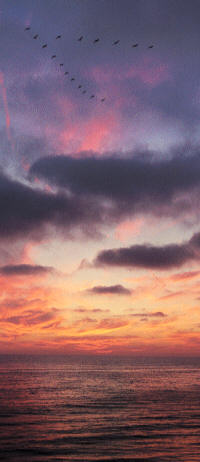 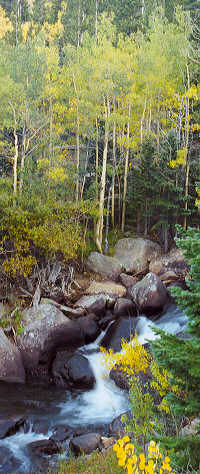 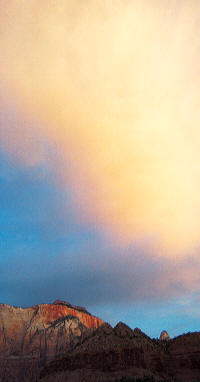 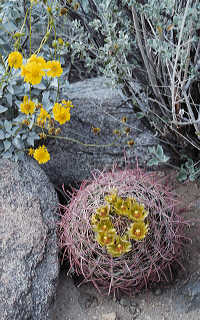  | About
me
I was born in in Rochester, New York, and I lived there until I left for Brown University in 1961. When I was eight I became interested in nature and birdwatching, but that faded as I grew older. In high school my interests included ham radio, high fidelity, electronics and a little photography. I learned to love fine music-- mostly classical-- but I was never any good at making it, hence my interest in high fidelity. I majored in physics at Brown. In my junior year I
became seriously
interested in photography, but I never quite saw it as a career path (I
felt pretty nerdy compared to the art students at neighboring RISD--
the
Rhode Island School of Design). After I graduated in 1965 I went on to
Wayne State University in Detroit, where I used the physics department
darkroom for developing and printing. 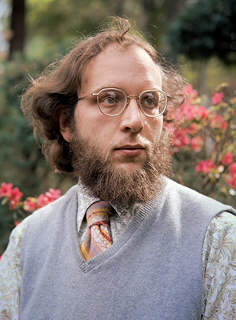 1974 In 1967 I moved to Boston, where I started my career in magnetic recording technology-- a career that remained remarkably consistent through numerous moves and job changes. I got back into exploring nature, now with my camera. I moved to Philadelphia in 1970, Silicon Valley (Los Gatos) in 1973, San Diego (Encinitas) in 1985, and Boulder, Colorado in 1998. The only time I wasn't involved with photography was when I lived in San Diego, where I got into high-end audio-- designing vacuum tube amplifiers and collecting LP records. In November 2001 I found myself unexpectedly retired, with
enough
savings to get by for a few years. At first I concentrated on
developing the normankoren.com
website. I considered turning "Making
fine prints in your digital darkroom" into a book. I kept so
busy I forgot (and still don't know) how I found time to hold a job. In July 2004 I got the idea for Imatest:
software for measuring lens sharpness and image quality in digital
cameras, digitized film images, scanners, and printers. With the help
of my son Henry, we launched the product on September 4, 2004. Sales
are gradually increasing; it seems to have become a standard in the
camera phone industry. As I write (in July 2005) there is a lot more to
do. I've started a lengthy autobiography
for the benefit of my family and friends, with no expectations that
anyone else
would be interested. After all, I'm not a zillionaire or a celebrity or
a
best-selling guru, though I have a few choice words of wisdom to offer.
I haven't pursued the project with much vigor. Building Imatest
has consumed my time and energy. About my photography I grew up near the George Eastman House, which had a wonderful collection of cameras and photographs. I was especially impressed by Ansel Adams' brilliantly detailed prints, "Aspens, Northern New Mexico 1958," "Winter Storm, Yosemite 1944," "Moonrise, Hernandez, New Mexico 1944," "Mount Williamson from Manzanar 1945" and "Sierra Nevada from Lone Pine, California 1944" (horses grazing in a sunbeam in front of the deeply shaded Alabama hills, crowned by Mount Whitney in blazing sunlight, with a red filtered dark sky on top). I vividly remember spending hours with the "Family of Man," the book that illustrated Edward Steichen's great 1955 photography show at the Museum of Modern Art. In sixth grade I learned how to operate a camera with f-stops and shutter speeds. I convinced my father to buy a 35mm camera-- the Graphic 35, which had push-button focusing, one of those curious "features" used to market products in the fifties (like Chrysler's push-button transmissions). In the summer of 1965 the George Eastman House was selling original Ansel Adams portfolios-- sets of ten stunning prints signed by the master-- for $150, which seemed very reasonable at the time. But $150 was all I had, and I didn't have a decent camera. As much as I wanted the portfolio, I wanted to master the craft of photography even more, so I spent the $150 my first single lens reflex: a basic Pentax with a clip-on light meter and a 50mm f/1.8 lens. By 1968 I realized the lens wasn't very sharp. A colleague convinced me to buy a Leica. I still marvel at the honesty and foresight of the salesman who encouraged me to buy the Leica M2R, telling me it would become a treasured collector's item. I used Leicas, with their razor-sharp optics, through the mid 1970's, when I switched to Canon SLR's for their versatility, convenience and excellent optics. At the time they seemed to offer better value than Nikons; I continue to use them out of familiarity. By 1971 I learned how to make fine prints with rich tonality. (Part of the secret is really deep black tones, but not too much of them; and as with all "rules," there are exceptions.) I began to realize that even with the best technique and finest lenses (an obvious obsession of mine), 35mm images couldn't equal the clarity, detail and tonality of larger formats. After trying several medium format cameras, I settled on the Hasselblad because of its breathtakingly sharp optics. I used it for much of my best work in the 70's and 80's. My Epson 3200 scanner (since replaced by better models) does very well with Hasselblad negatives for print sizes up to 13x19 inches. I used 35mm (Canon FD) equipment until March 2005,
when I purchased the Canon EOS-10D.
(I now use a 20D). I'll never go back to
a chemical color darkroom because it's too messy and difficult to get
the
right color balance, but I've been tempted by black and white. 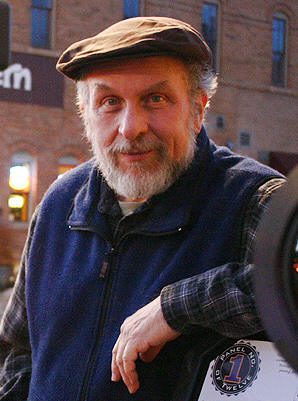 November 29, 2003 Photo by Tim Prince (Canon EOS-300D) One of my roommates in Detroit told me that in Kabbalistic philosophy, every object contains a spark of the divine spirit, and the goal of the Kabbalistic path is to experience that spark. I haven't studied Kabbalah enough to know if he got it right, but what he said stuck with me. I've been trying to communicate the spark through photography ever since. Of course it's a neverending and impossibly distant goal. But it's a wonderful process-- it forces me to see ever more deeply into humanity and nature. I'm determined to reach beyond my limitations and to learn to see in new ways-- to pay more attention to graphic design (a weakness of mine); to focus less on objects and more on relationships; to simplify; to really see what's in front of me rather than what I want to see. Most people see what they want to see and hear what they want to hear; it's a universal trait and it's very limiting. I look upon the act of mastering an art or a craft, no matter how humble, as a metaphor for mastering life itself. Mastery is much more than just knowing and practicing the fine points; it includes the power to think, feel and judge for yourself, rather than what society expects of you. It enables you to take risks and go beyond established bounds. It involves invocation of the Muses themselves-- the great guiding spirits that inspire the arts. Homer wasn't just paying lip service when he opened "The Odyssey" with, "Sing to me, Oh Muse." I'm strongly attracted to landscapes, both sweeping and intimate, and I'm fascinated by the transformative power of light. I'm grateful to live at the foot of the Rocky Mountains where I can find wonderful photographic material minutes from my home. 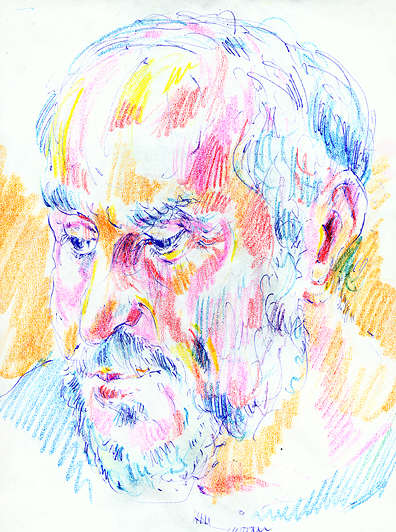 2002 Drawing by Sol Schwartz November 2015 Since I haven't added anything to this page since 2005, I'll do a brief update. I lost my job in magnetic recording technology in November 2001 (14 years ago!) Since I'd made one good investment (we won't discuss the turkeys) I didn't have to get a job right away. I decided I'd become a fine art photographer, and I had quite a nice time for a while (and I still enjoy it when I have the time). But fine art photography is not an easy way to make living and I kept being pulled toward the technical side. In the summer of 2003 I realized that the qualities of cameras and lenses that photographers have been arguing about since the invention of photography could be measured-- that image quality could be quantified with digital technology. So I started work on Imatest with help from my son Henry. We launched Imatest 1.0 on September 4, 2004. It sold four copies the first day (at $59 each!), and it's been growing ever since. I thought the customers would be geeky photographers like myself, but we sell mostly to engneers and scientists and companies of all sizes in a wide variety of fields-- mobile, medical, automotive, aerospace, academic, camera reviewers, Internet of Things, and much more. We have customers worldwide. In addition to numerous courses in the US (mostly in California and Colorado) I've taught in London, Oslo, Karlsruhe (Germany, where we have a reseller), Haifa, and Shenzhen, and my son Henry has been to Asia more than a dozen times. I operated out of my basement until 2008, when I could no longer handle the workload. We're about to move to our fourth office. They keep getting larger and nicer. (The last one was a bargain, but Boulder has become a little too fasnionable. Google is building a campus east of downtown, and bargains are impossible to find.) I can offer one piece of advice. Don't start a high tech company at age sixty if you want to retire early. (D'uh.) I guess I never thought about retirement. Updated
July 11, 2005
|
